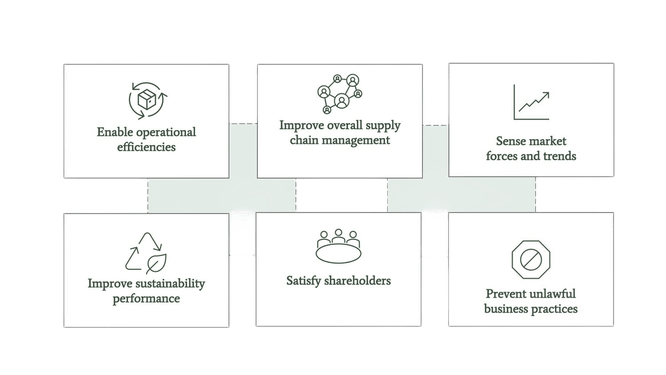
Get With It
Why technology implementation is urgent
While there is much talk about technology in the fashion world these days, the majority of it is centered around reaching consumers with digital marketing solutions, staying relevant in the newly-booming NFT world, just to name a few. What many businesses don’t recognize is the power of technology to tackle some of their most pressing problems—from the inside out. Now more than ever, “[f]ashion brands and retailers are leaning into technology not only to become more resilient to supply chain and other disruptions, but also to become more responsible and transparent as the world seeks sustainability solutions” (McKinsey and Business of Fashion).
Getting supply chain disruptions under wrap and focusing on traceability and transparency not only makes your business easier to manage, it will also pique the interest of investors and consumers alike. “Investors…will pour capital into companies whose technologies aim to make fashion players more nimble and more environmentally and socially responsible” (McKinsey and BoF). Being “nimble” in today’s world means being able to anticipate problems, and respond to them swiftly in ways that prove your business is adaptable in the face of adversity. From a sustainability standpoint as well, brands cannot change what they cannot see.T
he investment in “Traceability software — which helps brands identify, monitor and manage products across entire lifecycles and in different parts of a supply chain — is essential for the industry’s sustainability efforts” (McKinsey and BoF). Investors and consumers alike want to be equipped with information so that they can make smart decisions. So shouldn’t you too?
Block Party
Blockchain is key addition to augmenting other tech
The problem with digitization is many companies are turning to different solutions for various phases of their value chain. “While many parts of fashion companies’ value chains are already digitized, a challenge for many players is that digitization has happened in siloes, creating bottlenecks and other inefficiencies when it comes to sharing data and knowledge between functions” (McKinsey). Sharing data in a collaborative and mutually accessible way allows stakeholders to get on the same page.
“Historically, brands have tracked supplier performance with individual suppliers, using paper records and auditing. It’s a time-consuming process and the data are easy to falsify. Data also often aren’t connected across suppliers, making it hard to have a holistic view.Blockchain technology is one way to address these challenges, experts say.”
NBS

Blockchain is a technology that offers the reach of distribution needed to maintain transparency throughout an organization, and it’s also a ledger of truth due to its immutability. “It is a decentralized, transparent system of records, validated with an irreversible signature and shared by multiple users. Once added to the blockchain, information cannot be amended” (Business of Fashion). This ‘ledger of truth’ allows for more transparency and reliable authentication, because of its breadth and inherent security. “In fashion, blockchain technologies support rising demand for sustainability driven traceability, supply chain transparency and product authentication at resale” (McKinsey).

The Vi3 Edge
Your digital technology solution
Analog systems do not provide you the level of insight, flexibility, adaptability, and transparency needed to succeed in today’s market. “Technology’s impact is evident in key business areas, such as creating exceptional customer experience and engagement; helping to address sustainability issues; and upgrading internal processes and operations” (MIT Technology Review). Lasting change and progress happens at the structural level—you can’t make sustainability claims without providing relevant information to consumers. Well, you can, but it’s called Greenwashing, and today’s consumers have a very low tolerance for performativity. Instead, focusing on traceability will give you the insight you need to make your supply chain more sustainable, and highlight the ways you already are. Additionally, having a traceable supply chain makes your operation run more efficiently, saving your bottom line. For example, a lack of information sharing across suppliers can lead to “a small delay or disruption in any part of the supply chain can lead to excess inventory and stock-outs in other parts… blockchain could help overcome these challenges” (Harvard Business Review).
Digital technologies enable information to travel alongside the product. This enables businesses to capture, store, and analyze consumption patterns, which in turn helps organizations make better decisions. For example, research shows that 70% of greenhouse gas emissions (GHG) are related to material handling and use. If businesses have insights into how full their aircraft, ship, or truck is, they can determine in real time how efficient their delivery will be.”
MIT Technology Review
Vi3’s suite of tools equip you with unit-level data at your fingertips so you can have the oversight and tools for accurate assessment within your supply chain, enabling you to make smarter business decisions and equip your consumers with the information they need to trust and support your brand. Today’s tech is making it easier than ever to take back control. Are you ready?